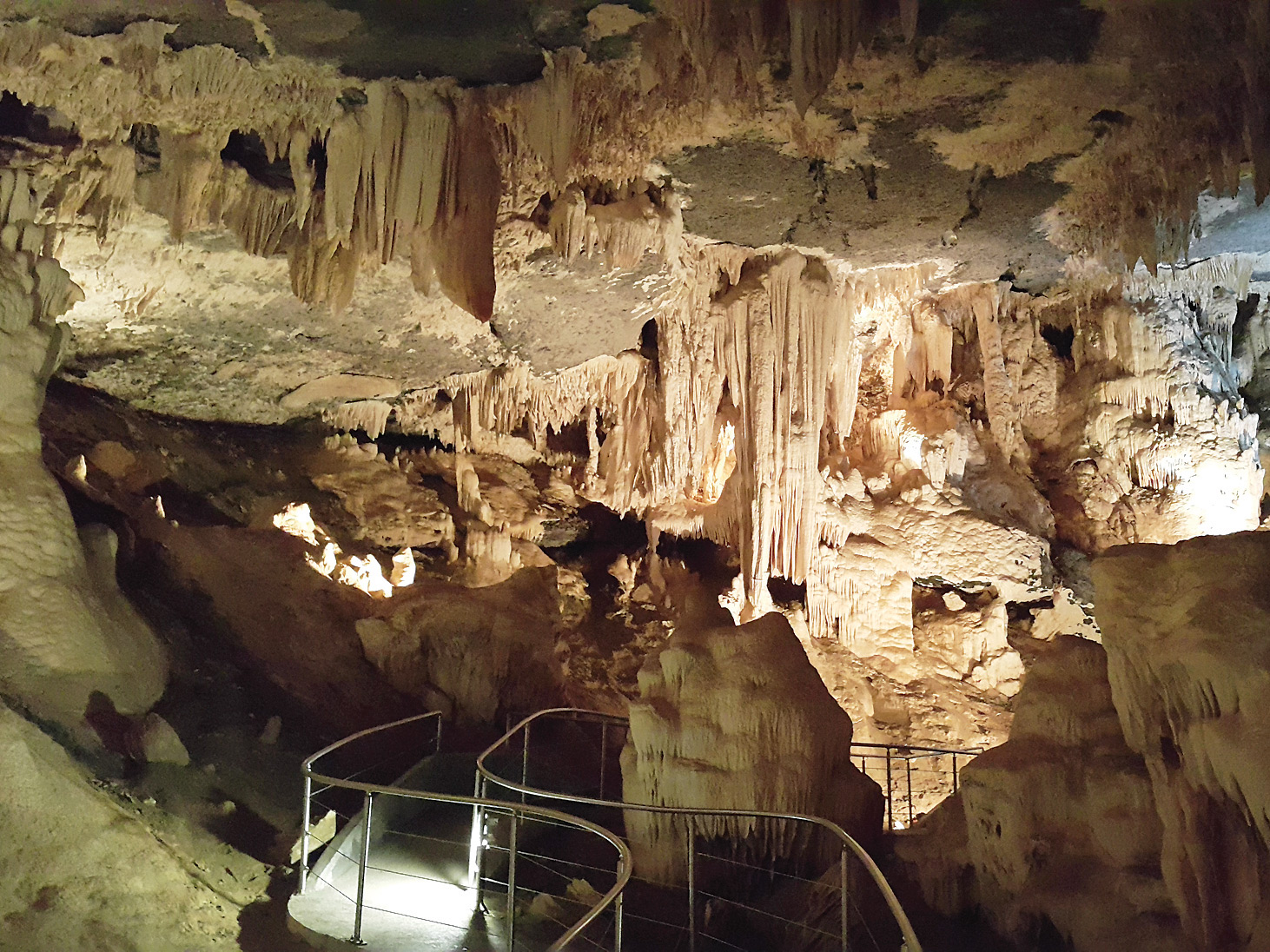


By Swati Basu Das — Living with little food and bare minimum oxygen consumption, Oman Garra cave fishes or the garra barreimiae is a welcome sight for visitors at the country’s most fascinating Al Hoota Cave. These dwellers of the dark underground natural water system at Al Hoota Cave derive their common name ‘blind fish’, reasoning on their sightless characteristic. A transformation or an evolution as scientists believe, these blind attractions in the cave have not only their eyes completely covered with eyelids but also fascinatingly pink in colour and transparent in appearance. Found only and extensively in the lakes present in the Al Hoota Cave, these underground cave dwellers are adept in dark environment of the cave, mostly found hidden within crevices or nibbling over the gravels. They not only lose their eyes to evolution but lose their colour pigments and scales as well turning them to somewhat transparent in appearance.
“These blind fishes are found only in this cave in Oman. Due to their unique features it attracts a lot of tourists as well as adventurers and scientists to the site,” Eng Khalid Mirza, Director of Projects Development at Omran, said.

Losing their sight over period of time in the dark, these species know how to survive even in darkness. With scarcity of food, oxygen and natural light, it seems saving energy gets into their prime focus. Studies reveal that losing sight provides them the boost required to survive deep down in the dark. A natural phenomenon among these incredible species; the same features of the garra fish which one can see in the open out in the streams and pools, lose their sight in course of time just for the bare minimum survival and restoring their energy in the dark environment of the cave. Cracking on the puzzle researchers have enough evidence to prove that the same school of fish which run down along the flow of the stream entering the cave lake during the rainy season. And therein starts their journey of evolution and mass generation. They lose their sight to evolution in course of time. Saving their energy in the dark is one prime reason. Same fish while exposed to light have been seen to recoup their sight, opening their eyelids and evading the blindness stage. The cavefish does not have eyes, but it can feel the obstacles in dark caves by puckering its mouth and producing bursts of suction. The school of garra fish, a common site at any pools along the popular wadis in the country, are presumed to be what dwells within the deep dark lakes of Al Hoota Cave as per some scientists who have run their research in this cave.

even hours, which simplifies the fact that they are the same school found in the open streams outside the cave, and it’s a matter of adaptation to the new environment, as, when returned back into the pitch dark, they lose sight over period of time. Therefore we ensure to keep the lake environment unexposed to any bright light and let the uniqueness flow through life,” exclaimed Khalid.
The Al Hoota Cave, Oman’s most popular natural tourist destination, had attracted thousands of visitors since its reopening on September 5, 2016. The Al Hoota Cave has three lakes of a stretch of upto 8 to 10 kilometres, of which only half a kilometre is showcased for the tourists and there too light is kept to the bare minimum just to help maintain the fish their characteristics. Stepping down the stairs nearing the underground lake, the sight of the sightless fish is a treat in itself.
— Pictures by Upendra Nayak
— axisswati@gmail.com
Oman Observer is now on the WhatsApp channel. Click here



